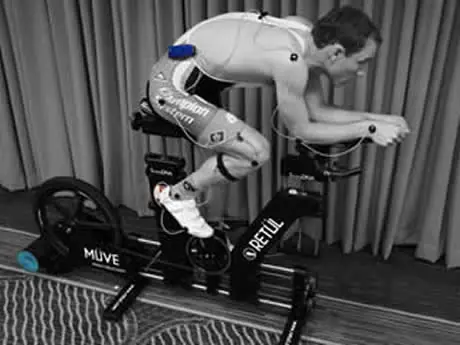
If you ride your bike long enough, chances are you'll want to get a bike fit. A properly fitting bike can help to prevent injury, promote pedaling efficiency and increase comfort.
But with all of the different bike fitting options available, how are we to know which one is best? Is the simple, more traditional approach better than using the latest and greatest technology?
Determining the correct approach towards blending modern technology, the expert eye and experience to get the best fit for the customer can be a difficult task. To help us out, let's look at the different types of bike fits and get some advice from one of the industry's best, Stu Waring.
More: 10 Bike Fit Myths...Debunked
Bike Fit Setups
First, here's a brief overview of two bike fit approaches and tools:
Standard Fitting/Studio Set-Up: Today, almost every bike store has a spot in the back with a trainer and a wheel block where a client's bike can be set up for a fitting. Hanging on the wall is a goniometer, a plumb bob and a few tools that help to measure inseam and torso length. The client mounts their bike, pedals it and has to stop several times to have the position measured. This is called a static fit.
High Tech Fitting/Studio Set-Up: In addition to what an "old school" studio has, the high tech fit studio consists of a dynamic fit bike or a motion capture system.
Tools of the Trade
SpinScan is part of the CompuTrainer system, which is an electronic Pedal Stroke Analyzer that can help increase power and efficiency. The software is able to show the left and right leg power splits and gives the rider feedback necessary to practice pedaling in "circles." It identifies "flat" or "dead" spots in the pedal stroke where power is not being transferred to the drivetrain and is a great tool during the fitting process.
More: Finding the Perfect Bike Fit and Frame Dimension
Motion Capture Systems: Retul is the most popular 3D motion capture system that uses a marker-based optical tracking system. It tracks infrared light (IR) emitted by an eight-point body harness worn by the rider that is equipped with light-emitting diodes (LEDs). This cycling-specific 3D motion capture system reads a rider's movements (knee angle, back angle etc.) while pedaling and records all three planes of movement (3D) in real-time. Retul's dynamic fit tools allow a bike fitter to make fast and easy adjustments to a rider's position using objective and highly accurate fit measurements to guide the changes.
Dynamic Fit Bike: The "fit bike" or "fitting machine" is the evolution of mechanical fit bikes (Waterford, Serotta) and replaces the need for a stationary trainer and client's bike. Instead of being fit on your own bike, we install your saddle, a similar sized bar and pedals directly onto the fit bike, which you then ride during the fitting process.
The beauty of these fitting machines is that they allow a rider's position to be changed while pedaling (dynamic state) with accurate adjustments (up/down, forward/backward) of the saddle and handlebar. Some examples of these are DFU, Retul MOVE and Guru Fit Bike. While they essentially do the same thing, the way they operate can differ. Most fitting machines have the option to be equipped with a power meter. The addition of SpinScan used during a dynamic bike fit provides methods to remove guesswork from the bike fit process that were not previously available.
- 1
- of
- 4








Discuss This Article